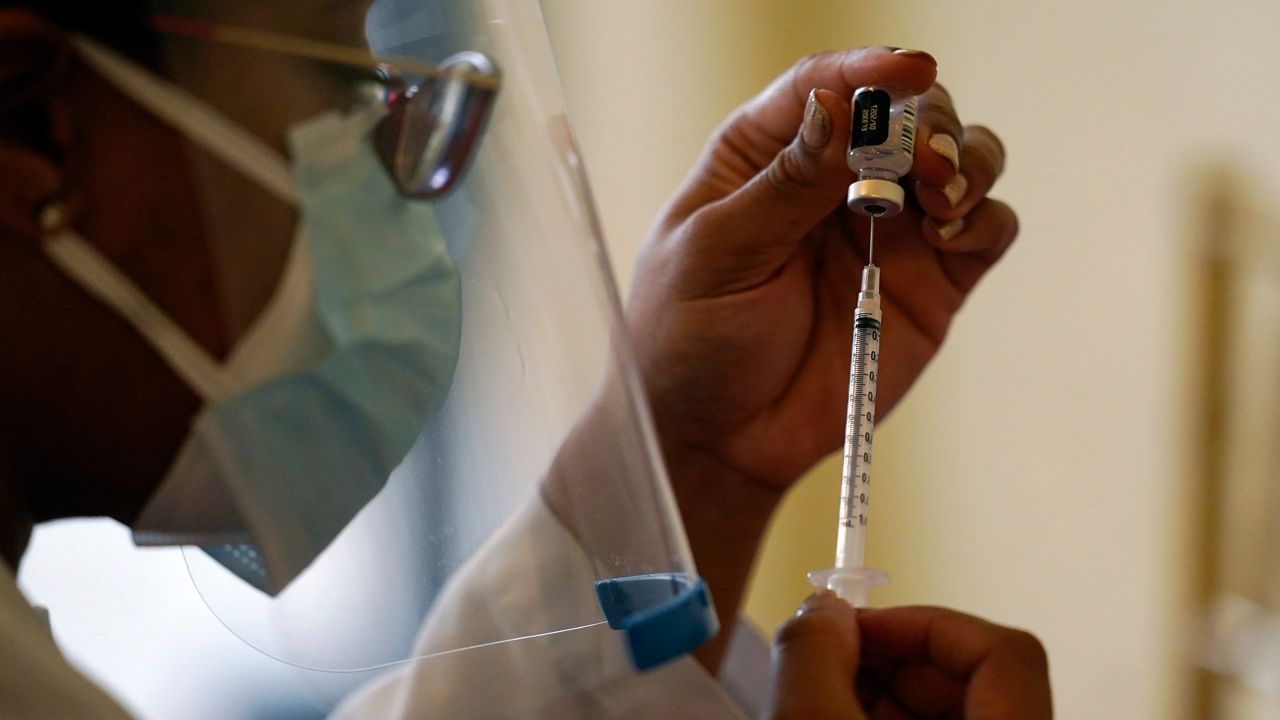CUYAHOGA COUNTY, Ohio — Cuyahoga County will see about 90 additional entities added to the roster of those administering the COVID-19 vaccine, as Phase 1B begins to rollout, said Board of Health Commissioner Terry Allan.
What You Need To Know
- Cuyahoga County will begin administering the COVID-19 vaccine on Tuesday, Jan. 19 to seniors and school employees in Phase 1B, the state’s second round of vaccine distribution
- In Phase 1B, 1 Cuyahoga County will receive a total of 515,000, which will be distributed by about 90 entities, which will be posted on the Cuyahoga County Board of Health website
- Residents must show proof of age, but not residence or immigration status, and contact the agencies directly to schedule an appointment
- Cuyahoga County Board of Health will continue administering the vaccine to those not vaccinated in Phase 1A, while the other providers move forward with Phase 1B
Phase 1B includes people over 65, those with severe medical conditions, and school staff and administration in K-12.
The county is expected to receive about 15,000 doses, which will be divided between the 90 entities – federally qualified health centers, home health providers, hospitals, physicians and select pharmacies.
A list of providers with contact information will be available on the Cuyahoga County Board of Health (BOH) website, Allan said during a media call on Thursday afternoon.
The BOH will not begin administering doses to those eligible in Phase 1B – yet, Allan said. The BOH will continue administering the vaccine to those in Phase 1A, of which could take a few more weeks, while the other providers move forward with Phase 1B.
About 10,000 people in Phase 1A still need the vaccine, including health care workers, first responders, and those in nursing homes and other congregate living facilities, he said. That group also includes workers in direct care facilities like hospice, dialysis centers, substance abuse facilities and dental centers. Phase 1A also includes developmentally disabled people and their caregivers, Allan said.
“It’s important that we finish our work in 1A,” Allan said. “I think that would be the wrong message to those that are very much at risk. We also know our health care workers are on the front lines, often protecting the most vulnerable folks, and our seniors, we want to make sure they have access to vaccines, so they can continue to safely serve our seniors.”
The county expects to receive additional doses each week, Allan said.
Two brands of the vaccine are being administered in Ohio, both which require two doses: Moderna is 28 days apart, and Pfizer-BioNTech is 21 days apart.
Once residents receive the second dose they will receive a card with information about the vaccine, which should be kept, he said.
Anyone who tests positive for COVID-19 should not get the vaccine, Allan said, until their symptoms are over and they’ve finished their quarantine period.
To be vaccinated, residents must first contact the agencies on the list to make an appointment, and be prepared to show proof of age, but not proof of residence or immigration status, Allan said.
Residents in Phase 1B should follow the state’s timetable to schedule an appointment:
- Jan. 19 – 80 and older
- Jan. 25 – 75 and older, and people with severe congenital or developmental disorders
- Feb. 1 – 70 and older, and employees of K-12 schools
- Feb. 8 – 65 and older
Side effects include pain at the injection point, headache, fatigue, or slight, which is the body’s normal immune response, Allan said. The symptoms will go away on a day or two.
To reach the senior population to assist with sign-up, the county will work with the Division of Senior Adult Services, Western Reserve Area Agency on Aging, Cuyahoga County Public Library community senior centers and the library system, he said.
“All providers are also urged to eliminate barriers to healthcare access for vulnerable populations,” Allan said. “These barriers can include a lack of adequate transportation, handicap accessible locations, lack of computer literacy or access and employment that does not offer paid time off for medical appointments.”
Allan urged providers to offer scheduling flexibility for appointments, with evening and weekend hours, and to advertise clinic information on print materials displayed around the community at libraries, grocery stores and faith based organizations.
Ohio is receiving about 100,000 doses in Phase 1B, which will be disbursed across the state, Allan said. He urged patience.
“Please know that vaccine is still a very limited supply and the demand, we know, outstrips the current supply in our community, in the state of Ohio and around the country,” he said.
According to the 2019 Census, about 230,000 people meet the parameters in Phase 1B with an additional 22,000 adults employed by the schools, Allan estimated.
“So I want to take a moment to give people a sense of the enormity of this group here in Cuyahoga County.” Allan said. “So these are big numbers, even in the face of the fact that if we had lots of vaccine, they would be big numbers.”
In these early stages of the vaccine’s rollout, health officials are working with the state to create an infrastructure, which now comprises 1,700 vaccine administrators across the state, he said.
Despite the sluggish rollout and limited number of doses, some countries will not have access to the vaccine for another year or more, Allan said.
“So we're very fortunate, and we'll just continue to need to be patient,” he said.
Visit the Cuyahoga County Board of Health website for more information, or call the MetroHealth 24/7 COVOID-19 hotline at 440-592-6843.



